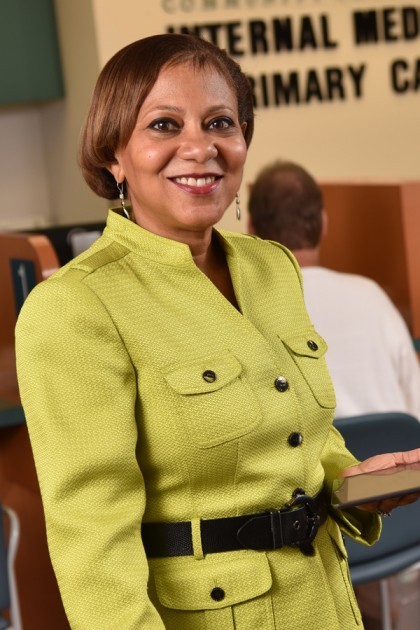Eliminating racial disparities in the outcomes of programs to control blood pressure can be accomplished with a few one-on-one coaching sessions delivered by health professionals—but not if the program requires people to get to a clinic, according to results of a new Johns Hopkins Medicine study.

Image caption: Lisa Cooper
The findings are described in the current issue of the Ethnicity and Disease journal and add to mounting evidence that health and wellness programs work best when medical practitioners go out to people in their communities.
"For people who can come to a clinic-based program, that program may work really well, but it's not enough in and of itself to eliminate the racial disparities we see in efforts to reduce blood pressure and other chronic diseases," says Lisa Cooper, vice president of health care equity for Johns Hopkins Medicine and professor of medicine at the Johns Hopkins University School of Medicine. "Success requires a broader and more comprehensive strategy."
In a commentary accompanying the study, Cooper, who has studied racial disparities in health outcomes for decades, lays out the scope of the problem: Compared with whites in the U.S., African-Americans are 80 percent more likely to die from stroke, 50 percent more likely to die of heart disease, and suffer from a 320 percent higher rate of end-stage renal disease. Each of these conditions is fueled by uncontrolled hypertension, especially among urban poor populations, where geographic wealth and racial inequities are stark.
For the study, Cooper and her team telephoned 3,964 patients with uncontrolled hypertension—or a blood pressure reading higher than 140/90 millimeters of mercury (mm Hg)—who had visited one of six Baltimore health clinics (four in underserved areas) in the previous year. The team was able to reach more than half of the patients they telephoned and asked patients if they'd be interested in joining a program to lower blood pressure. Anyone participating, the investigators explained, would have to visit the clinic nearest them three times over three months to meet with a specially trained pharmacist, dietitian, or both. The program included one 60-minute session and two 30-minute sessions.
A total of 245 patients completed all three sessions, 332 partially completed the program, and 330 who participated in the study did not attend any sessions. The average age for all those who participated was around the mid-50s. Sixty percent of those who completed all three sessions, or 137 individuals, were African-American.
Participants who completed all three sessions experienced the biggest drop in blood pressure. Those who completed one or two sessions also decreased their blood pressure, though to a lesser degree. African-Americans who completed the full program started with higher blood pressure readings overall but experienced greater drops in blood pressure, which wiped out the racial disparity.
In a new ongoing study that builds on the lessons learned from the previous work, Cooper says that primary care physicians were reluctant to refer patients to the program because of the singular focus of the study on blood pressure. So the team decided to focus on people who have high blood pressure in conjunction with other common ailments, such as diabetes or depression. Specially trained nurses have replaced dietitians and pharmacists because of their ability to address a variety of clinical and social issues. And the program includes a community health worker who can, if necessary, visit patients at home or in their own communities to reinforce education provided in the clinic and assist patients in accessing other health services, social services, and community resources.
The studies are part of a community-engaged research program established and sustained by the Johns Hopkins Center to Eliminate Cardiovascular Health Disparities, with grants from the National Institutes of Health and the Patient-Centered Outcomes Research Institute since 2010.
"To stay healthy or to treat chronic illness is not just about what happens in a 15-20 minute office visit to the doctor. What really matters is a person's ability to follow through on recommendations regarding changes in diet, lifestyle and medication use the rest of the time as they go about their daily lives at home, at work and in the community," says Cooper. "In addition to addressing medical needs, health system programs should also address patients' social, cultural, and financial needs, using partnerships with other sectors of the community to enhance program effectiveness and outreach to those most in need."
Read more from Hopkins MedicinePosted in Health, Politics+Society
Tagged health disparities, cardiovascular health, hypertension









